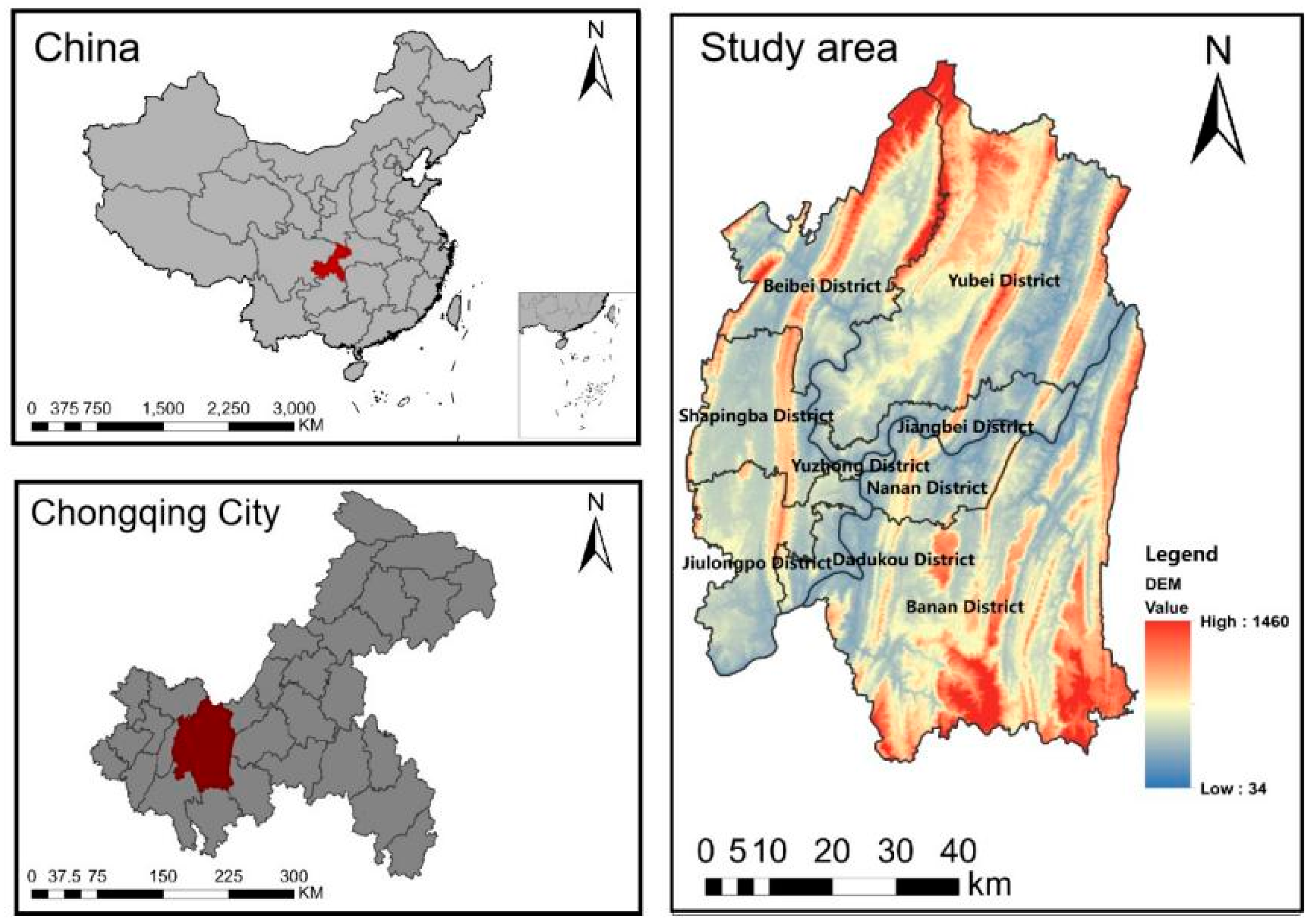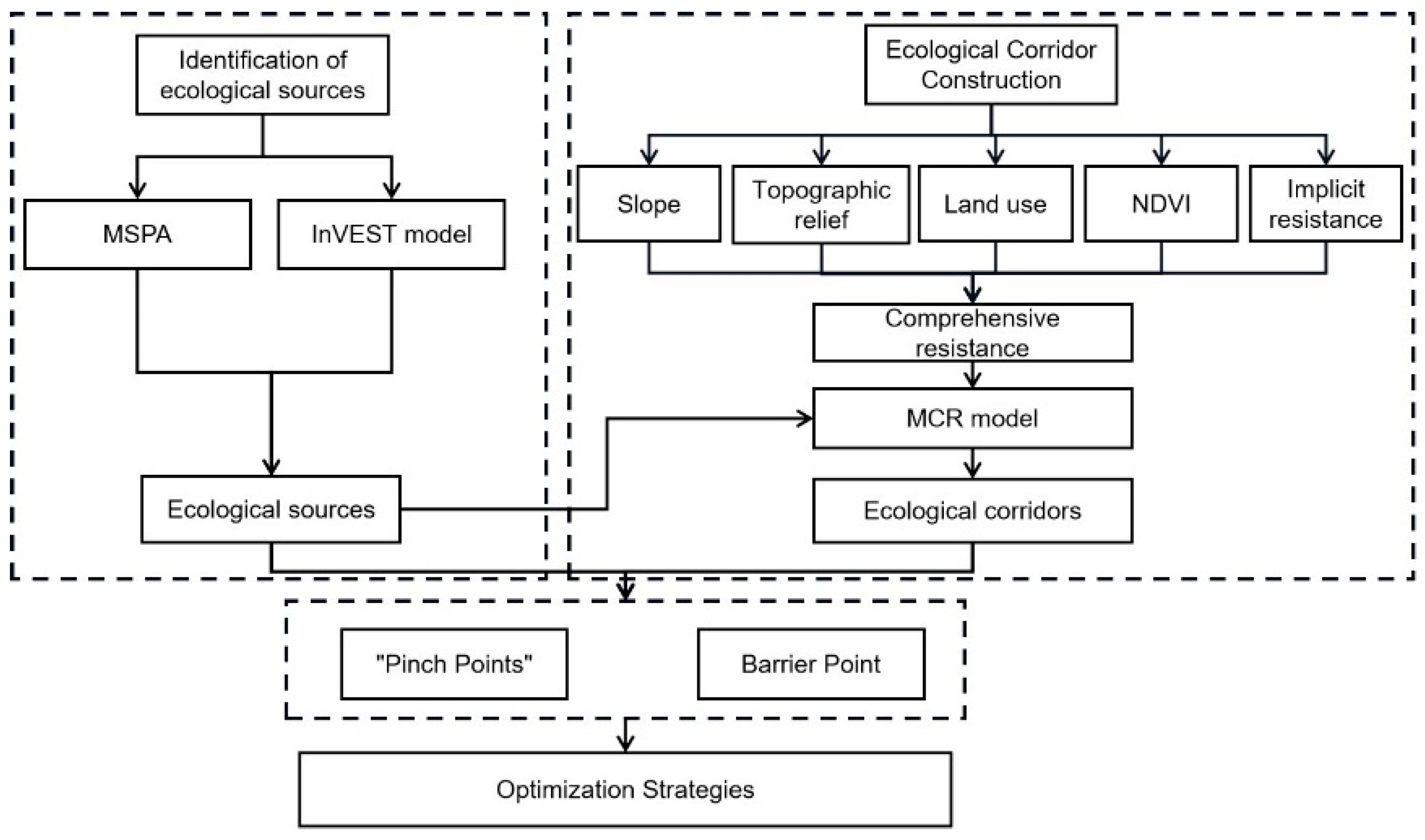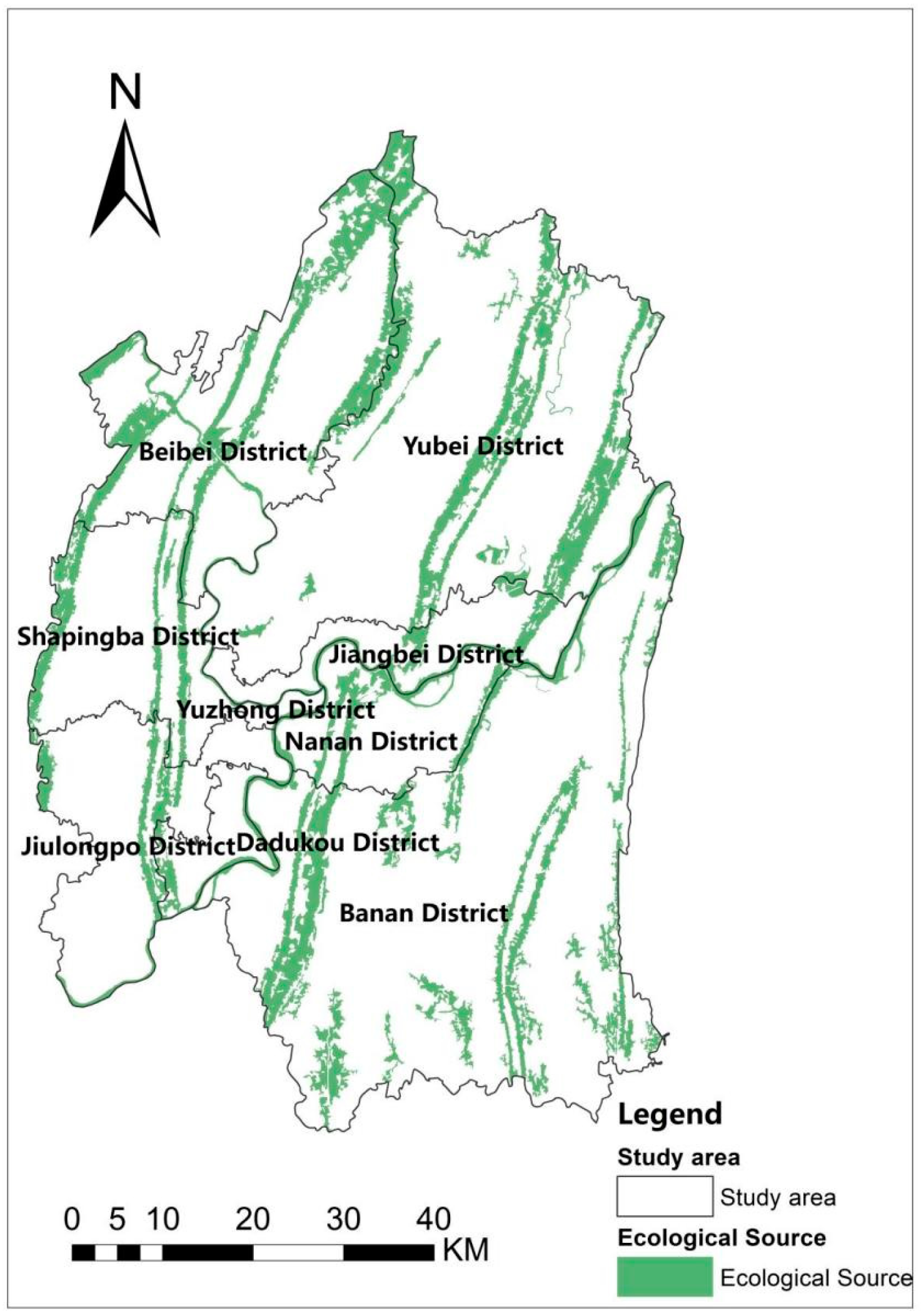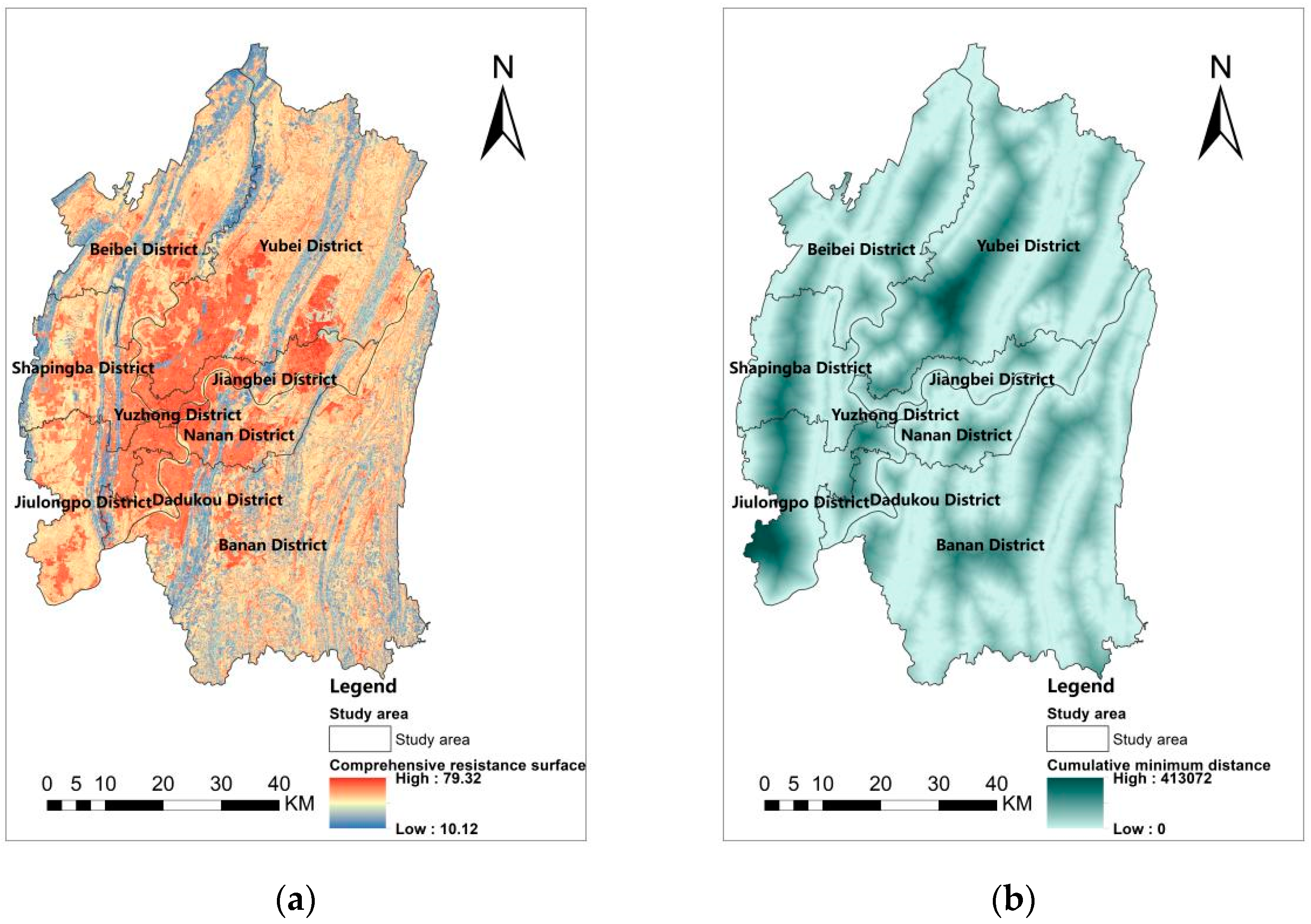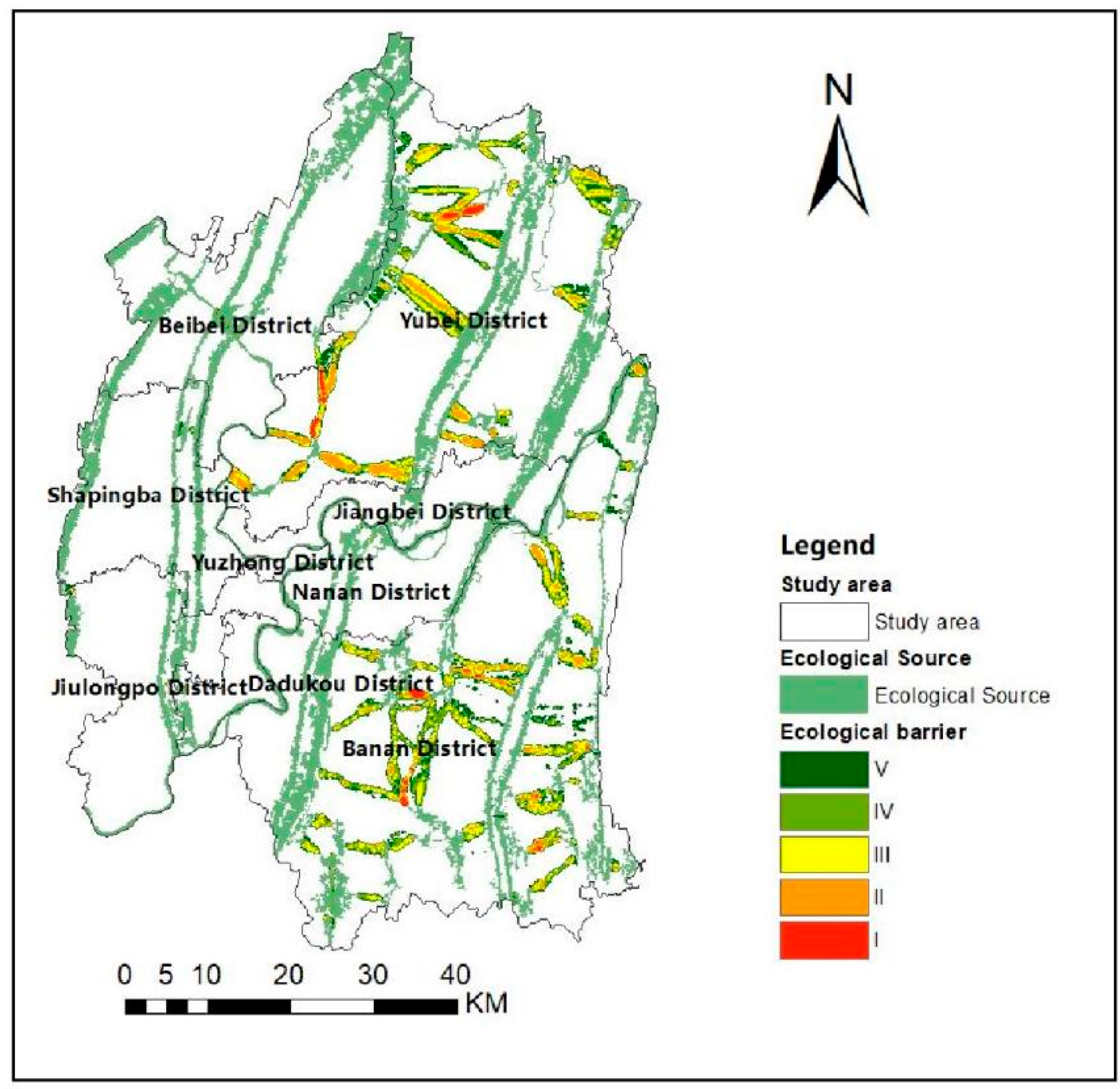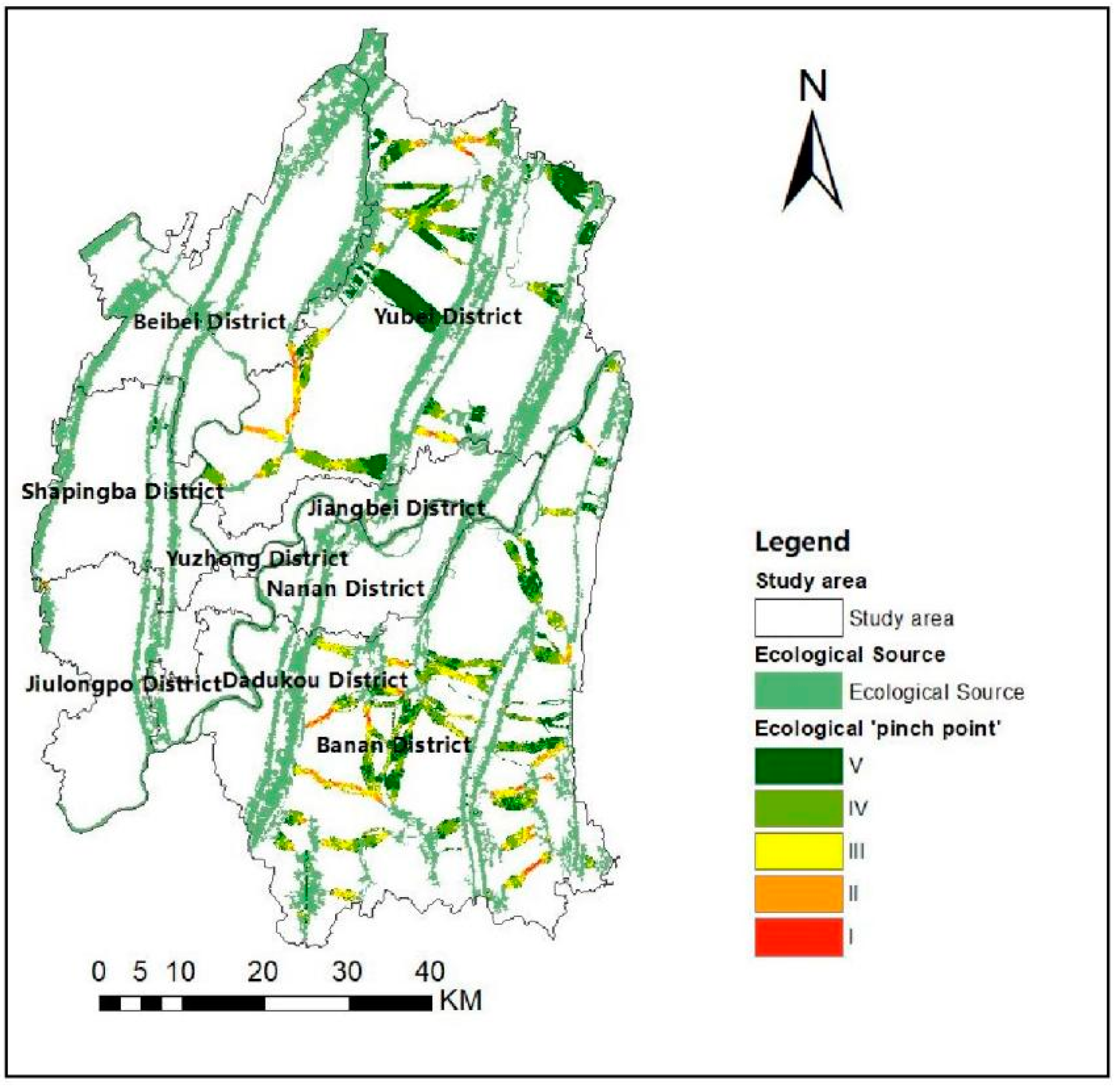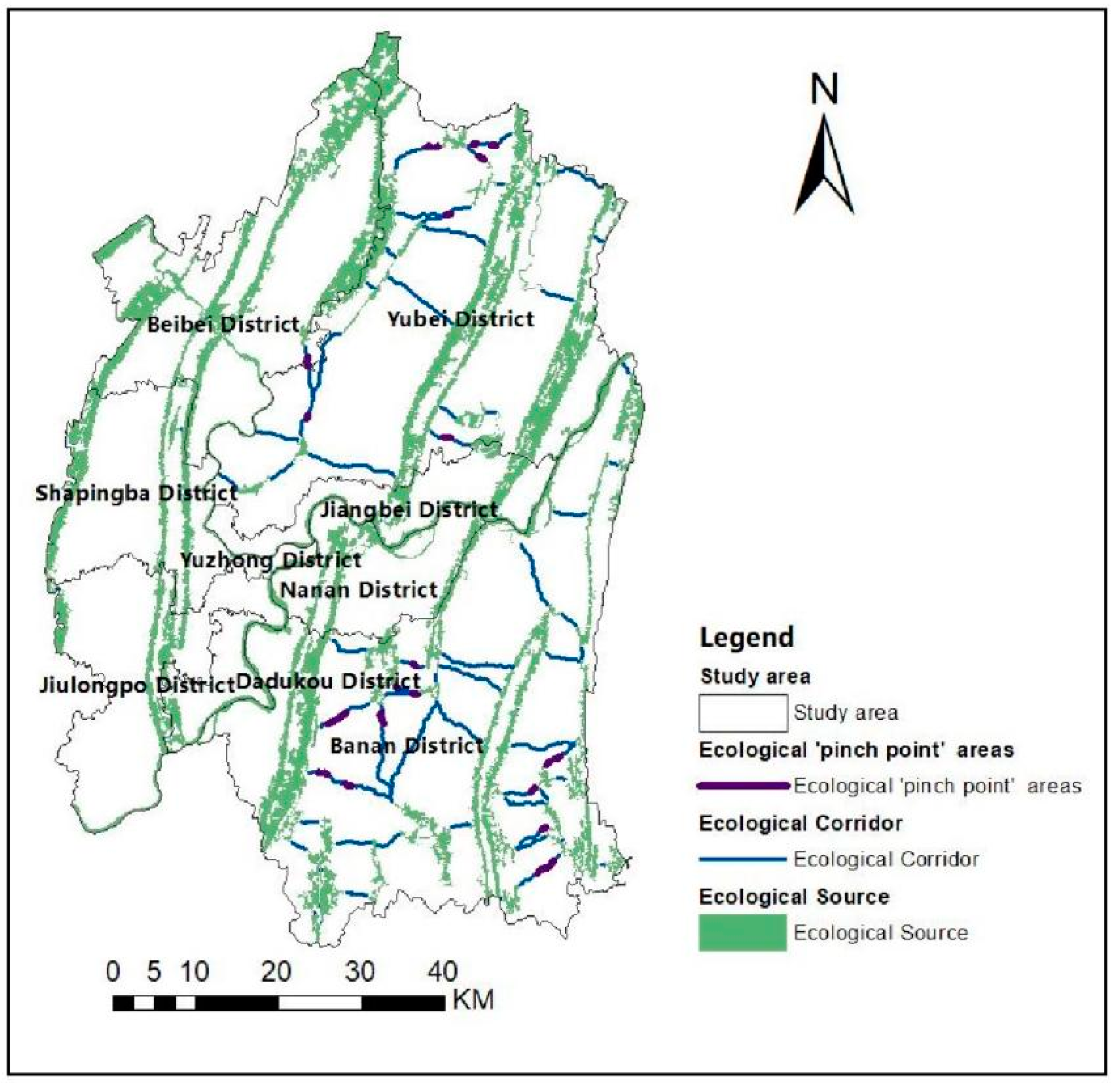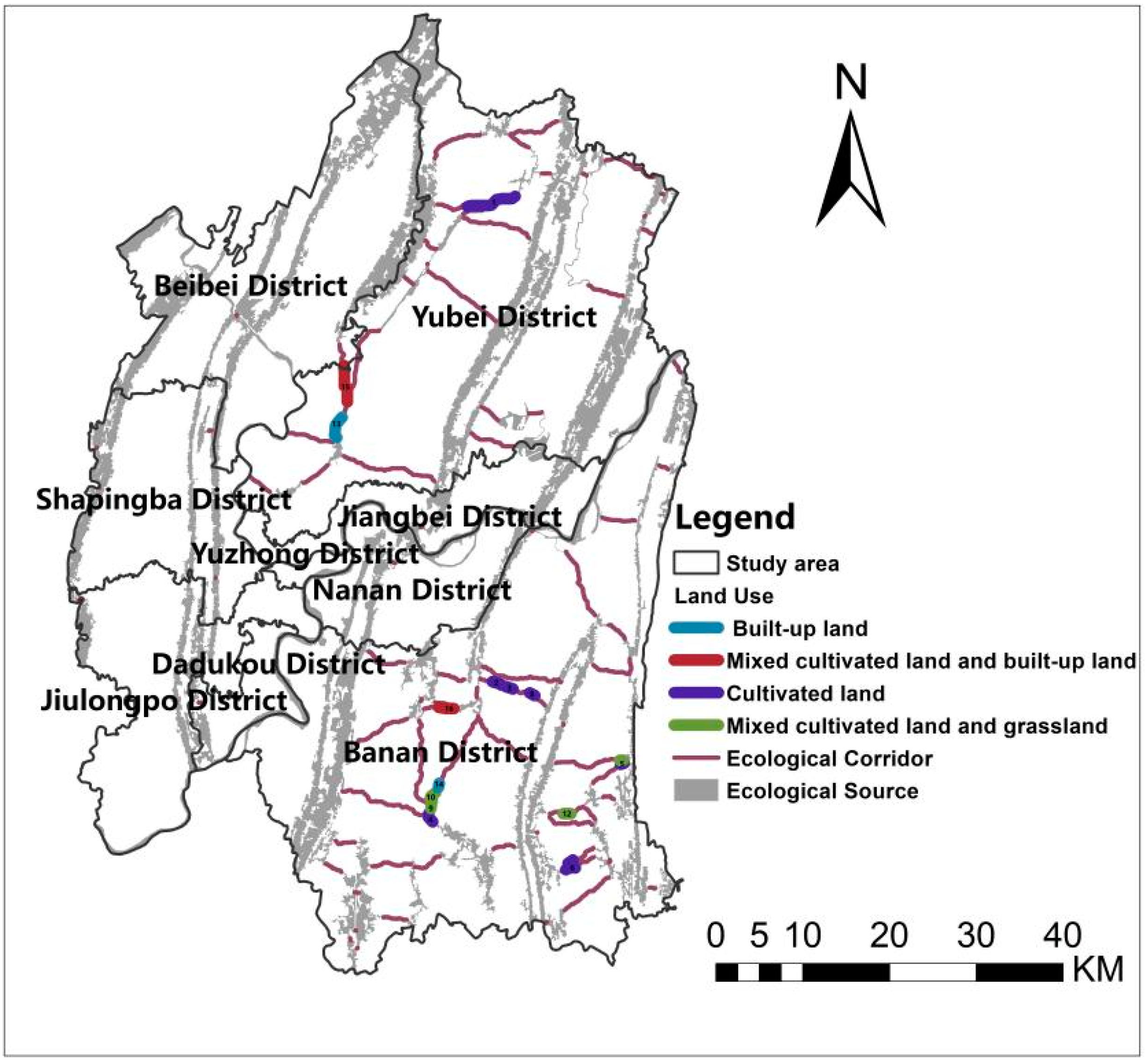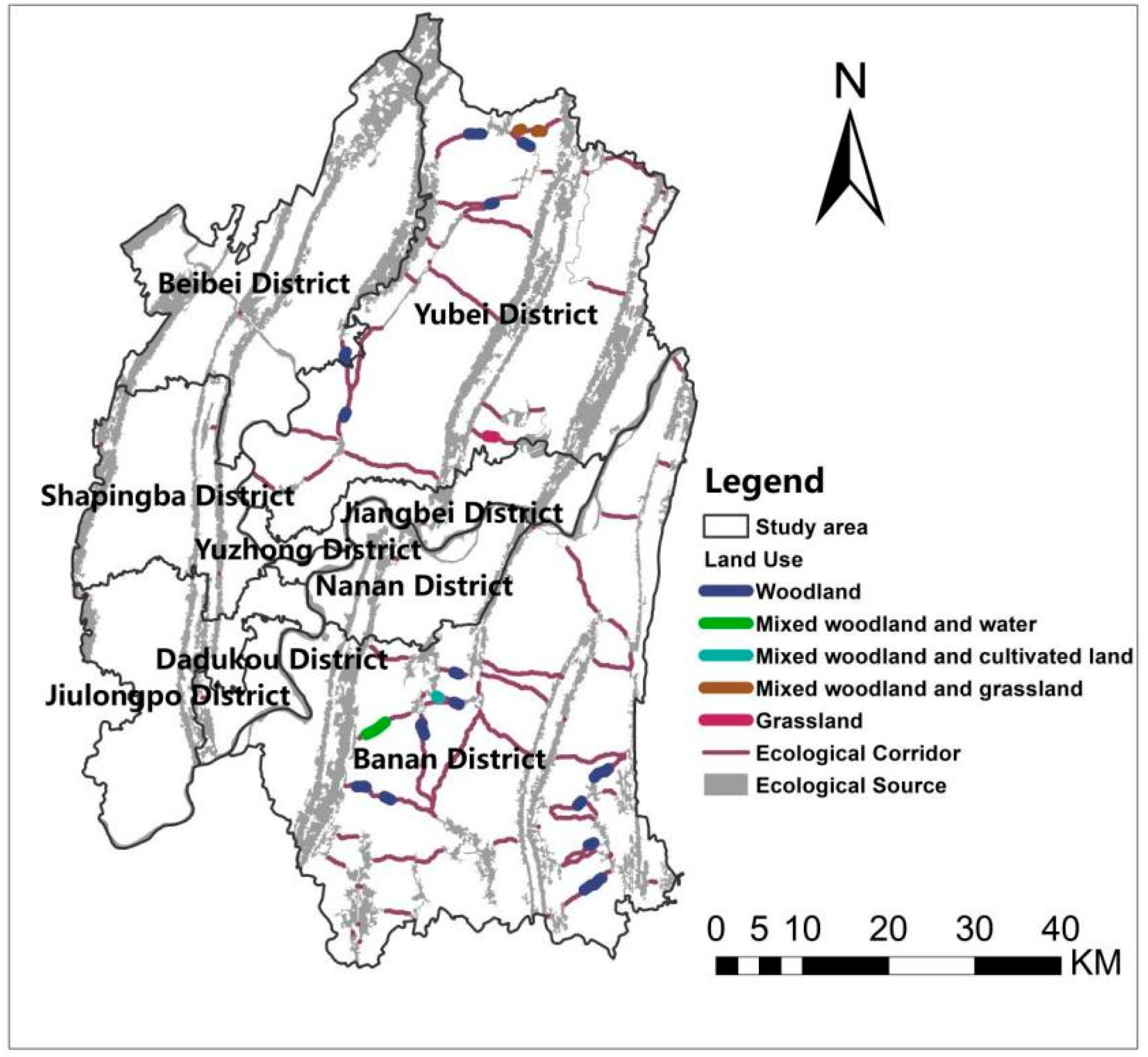1. Introduction
The growth of the urban population and the rapid development of urbanization rates may have negative impacts on the sustainability of urban ecology [
1]. As is currently happening in China, cities have entered a phase of accelerated expansion after the reform and opening up, and their urbanization rate has reached 60.6% by 2020 from 17.8% in 1978. The urbanization rate in southeastern coastal areas such as Shenzhen, Foshan, Dongguan, and Zhuhai has even exceeded 80%, the level being on par with that of developed countries [
2]. In the process of modernization and population growth, the lack of experience has caused a series of problems, such as tightening resource constraints, severe environmental pollution, and ecosystem degradation. Building an ecological civilization is presented in this context as a national policy, a holistic strategy for the future of human living conditions [
3]. As a result, ecological civilization has been raised to an unprecedented level, while the theme of ecological restoration has become the subject of future exploration by researchers [
4].
Research on ecological restoration is currently the focus of exploration in the disciplines of ecology and the human environment, involving micro-engineering restoration and macro-ecological assessment. Researchers have concentrated on water and ecological restoration, soil and water conservation, wetland regeneration, and eco-restoration of mining areas at the micro level. For micro-level studies, scholars prefer to restore single ecological issues through the application of engineering techniques, such as ecological restoration of polluted water bodies based on chemical, biological, and engineering methods [
5,
6,
7]; ecological maintenance of soil and water resources through converting cultivated land into forests and reforestation [
8,
9]; contribution to the cycle of wetland ecosystems by preserving key species [
10]; and zoned reclamation approaches have also been used to restore mining areas ecologically [
11].
From the macro perspective, experts mainly assess the ecological sensitivity [
12], ecological conservation importance [
13], degree of ecosystem degradation [
14], and ecological vulnerability [
15] of the region and on its foundation, make the classification of ecological restoration zoning and ecological restoration levels. Based on the results of the above classification, the priority of ecological restoration can be determined, the essence of which is to enhance the ecological quality of the environmentally damaged area, which in turn has a positive impact on the entire natural landscape of the locality.
In general, the micro approach is mainly based on engineering techniques. It emphasizes the mitigation of a particular ecological risk and lacks consideration of the overall pattern. However, the macro strategy offers more insight into the ecological status but less into the processes. Moreover, it improves the system’s resilience as a group by addressing the poorer environmental situation. Therefore, ecological restoration should follow a holistic to microscopic approach, which allows the connectivity of ecological flows to be fully considered and the ecological goals of low-cost maintenance to be achieved by improving the constraints in critical areas.
Ecological security patterns are based on the ‘source-sink’ theory and have developed an “ecological source identification—building a resistance surface—extracting corridors paradigm” [
16]. This approach reflects the basic idea of ecological patterns and integrates the analysis of development processes. Since 1990, when the ecological security landscape was proposed, it has been seen as a framework for maintaining ecological security and sustainable urban development and has been practiced extensively [
17]. For example, the World Wide Fund for Nature (WWF) delineated 200 priority protected areas and identified a series of representative ecosystems in the early 20th century; The Conservation International (CI) identified 35 biodiversity conservation hotspots to address threatened habitats; the World Conservation Union (IUCN) identified vital biodiversity areas. Current research on ecological security patterns focuses on constructing ecological security patterns and optimizing of ecosystems [
18]. In the construction of ecological security patterns, the extraction of ecological sources and the identification of ecological corridors are the primary research. Early researchers tend to directly select large patches and nature reserves as ecological sources [
19,
20]. However, it has developed to identify ecological sources by quantitative methods such as Invest model (eco-environmental quality) [
21], morphological spatial pattern analysis (MSPA) [
22,
23], or constructing evaluation systems [
24,
25]. Recently, more scholars have shown that combining two or more methods can effectively extract ecological sources. For example, Sucui Li identified ecological sources in the eastern part of Ordos City, Inner Mongolia Autonomous Region, China, by combining the Invest model and MSPA [
24]; Feng Tang et al. used the same method to identify the ecological security pattern in the Huaiyang section of the Grand Canal [
26]. For corridor extraction, the MCR(minimum cumulative resistance) has been widely used for ecological flow simulation based on landscape heterogeneity [
27]. Ecological corridors are identified by MCR models based on the construction of ecological resistance surfaces. Researchers have mainly used land use as the resistance surface. However, due to the high fragmentation of urban landscapes, the diversity of land use patterns, and the complexity of the interactions between land use and ecological processes, homogeneous assignments based on land cover types inevitably mask spatial heterogeneity among the same areas. As a result, land use does not accurately reflect ecological resistance. In recent years, scholars have tried introducing spatial data such as nighttime light data, vegetation cover, or slope to correct the ecological resistance coefficient among single land cover types [
28,
29]. In terms of ecological optimization, there are apparent differences in proposed optimization strategies because of scholars’ different claims. For example, Yang Junfu optimized the ecological security pattern of the Loess Plateau in China through landscape index [
18], Shi H et al. optimized the ecological security pattern of Tianchi in Xinjiang based on landscape pattern [
30], and Liang Fachao et al. optimized the ecological security pattern of Quanzhou, China from the perspective of ecological environment quality [
31]. In general, the current optimization strategies based on ecological security pattern focus on optimizing ecological security patterns through landscape index, pattern, and ecological environment quality. These studies have important implications for sustainable urban development, but these opinions are often too macroscopic to determine the location, type, and amount of specific restoration. Thus, they cannot be applied well to urban ecological restoration practices.
Furthermore, with the emergence of circuit theory and its effectiveness in identifying negative factors [
21,
32], the collaborative work of ecological security patterns and this theory provides practical possibilities for restoring ecological key points and the positive circulation of ecological flows. Circuit theory has its roots in physics and has been applied to studying of gene flow in heterogeneous landscapes. Brad McRae’s team of senior landscape ecologists at The Nature Conservancy developed Linkage Mapper software to predict movement patterns in complex landscapes and to accurately identify the location, number, and type of ecological barriers and “pinch points” [
33,
34,
35]. It could achieve large-scale ecological restoration outcomes through less costly inputs.
Mountains cover a quarter of the Earth’s surface, and nearly 12% of the world’s population lives in mountainous and high-altitude areas [
36]. Globally, the population living in mountainous urban areas is gradually increasing). For example, in developing countries, more than a quarter of the mountain population lives in cities [
37]. The ecological attributes of the mountainous cities are enormously different from those of the plains [
38,
39]. The dramatic topography of mountainous cities leads to their ecological fragility and biodiversity characteristics. It is susceptible to more significant damage from human disturbance and has high ecological rehabilitation costs. The destruction of some sources will negatively impact the overall ecological environment because of the more systematic character of the ecological sources in cities made up of continuous mountains and water systems [
40,
41]. In summary, restoring ecological key points to improve the integrity of a complex mountainous urban ecology is well suited for this purpose. However, a search of WOS under the titles of “mountainous cities” and “Ecological restoration” showed that there were few studies on ecological restoration of ecological security patterns in mountainous cities.
Therefore, the focus of this study is to combine the construction of ecological security patterns with circuit theory to identify ecological key points in Chongqing, a mountainous city, and to determine their location, scale, and type. The whole project will be taken forward to propose targeted ecological restoration strategies, and its application may provide theoretical support and practical reference for future ecological restoration of complicated terrain.
6. Conclusions
The construction of ecological security patterns has an important impact on clarifying the ecological status within the study area [
63,
64]. In this study, the ecological security pattern of the study area is studied through the application of the MSPA model, the INVEST model, and MCR analysis. As a result, it is found that there are 46 ecological sources in the central city of Chongqing, which are comparatively distributed and consist mainly of mountains and water systems that are important for maintaining the sustainability of the study area. In the center of Chongqing, there are 86 ecological corridors, with a pattern of more east than west, which is significant for the migration of animals and should be avoided in future construction.
Protecting and restoring key points can improve ecological quality at a relatively lower budget [
65,
66]. Based on the study of ecological patterns, circuit theory is applied to identify the key points in the ecological corridors. The research found 17 sites totaling 24.20 km of the ecological corridor in the barrier point zone. It consists mainly of build-up land and cultivated land. In addition, up to 22 segments, totaling 19.27 km of the ecological corridor, are located in the pinch point zone. It is composed mainly of woodland. The project provides statistics on these key points’ location, type, and scale, which will facilitate the reallocation of resources in subsequent practical works.
In general, the ecological security pattern of mountainous cities is mainly composed of mountains and water systems, so the protection of mountains and water systems is vital in mountainous cities, and the integrity of mountains and water systems should be ensured as much as possible in the process of urban development. At the same time, the expansion of construction land and cultivated land in mountainous cities may be the most crucial factor causing ecological barrier points, and ecological “pinch points” are primarily composed of woodland. Therefore, ecological restoration can be carried out by means of afforestation.
